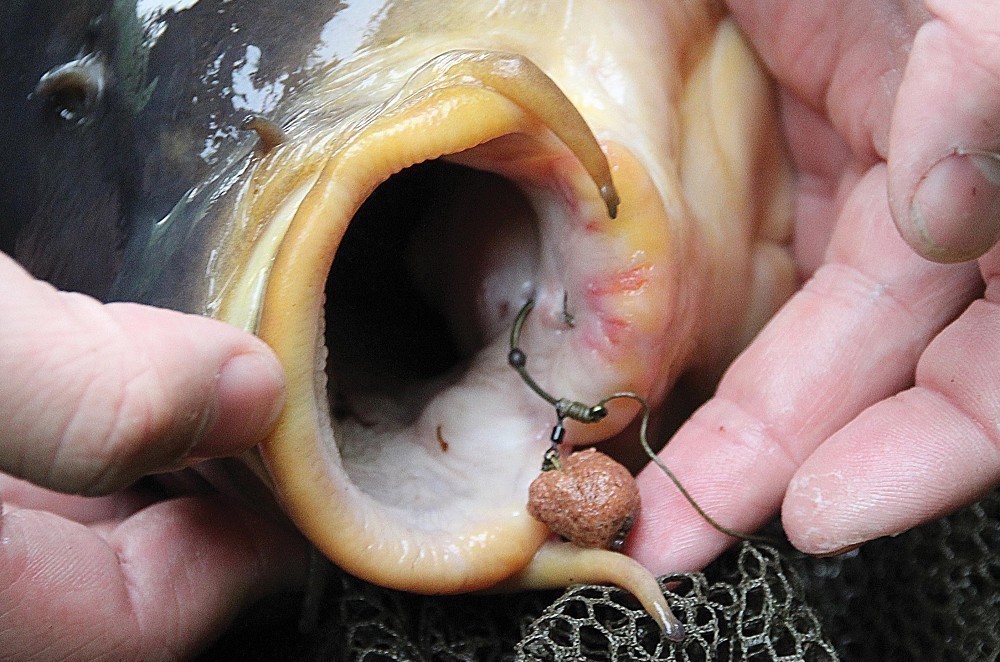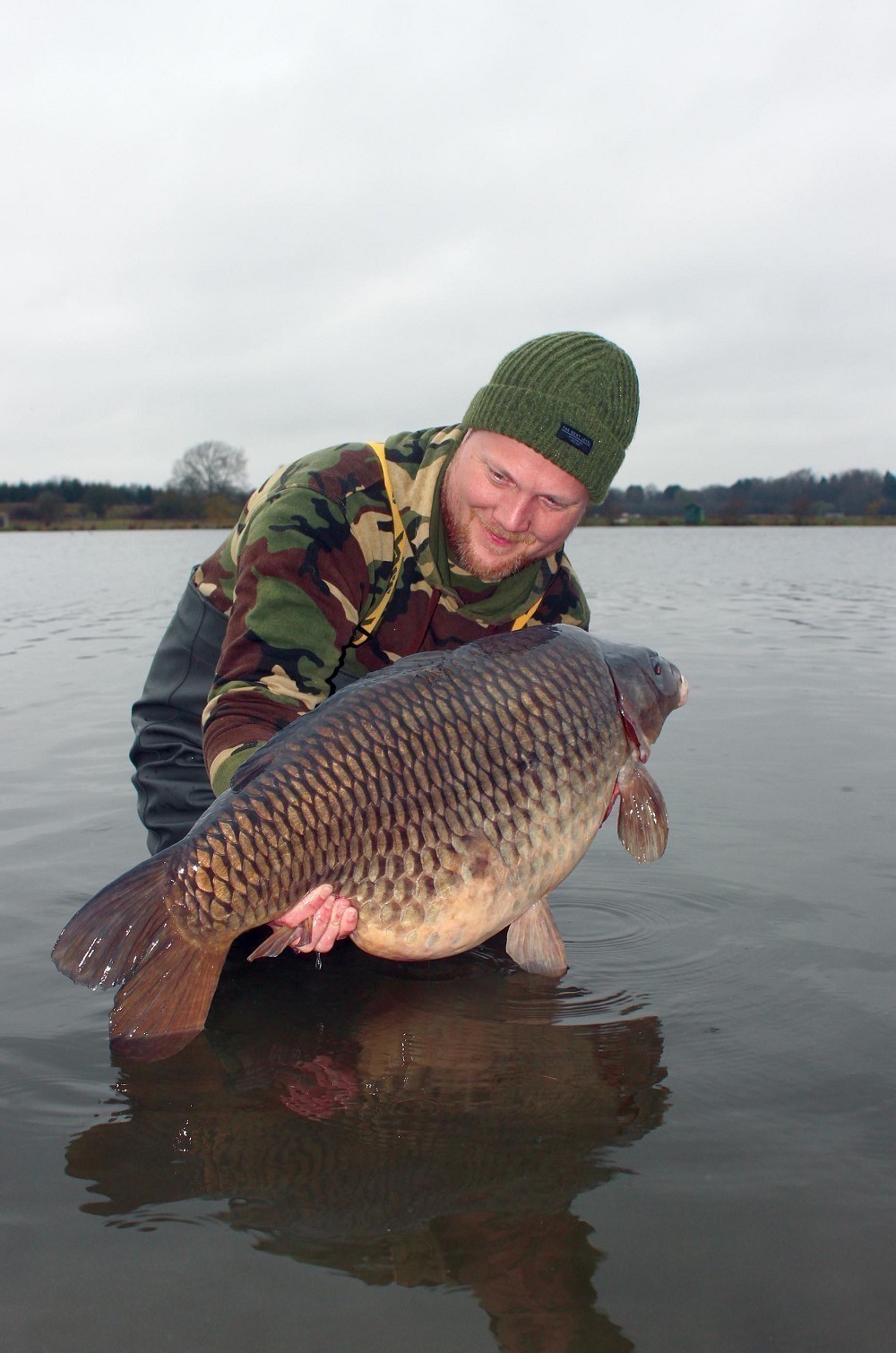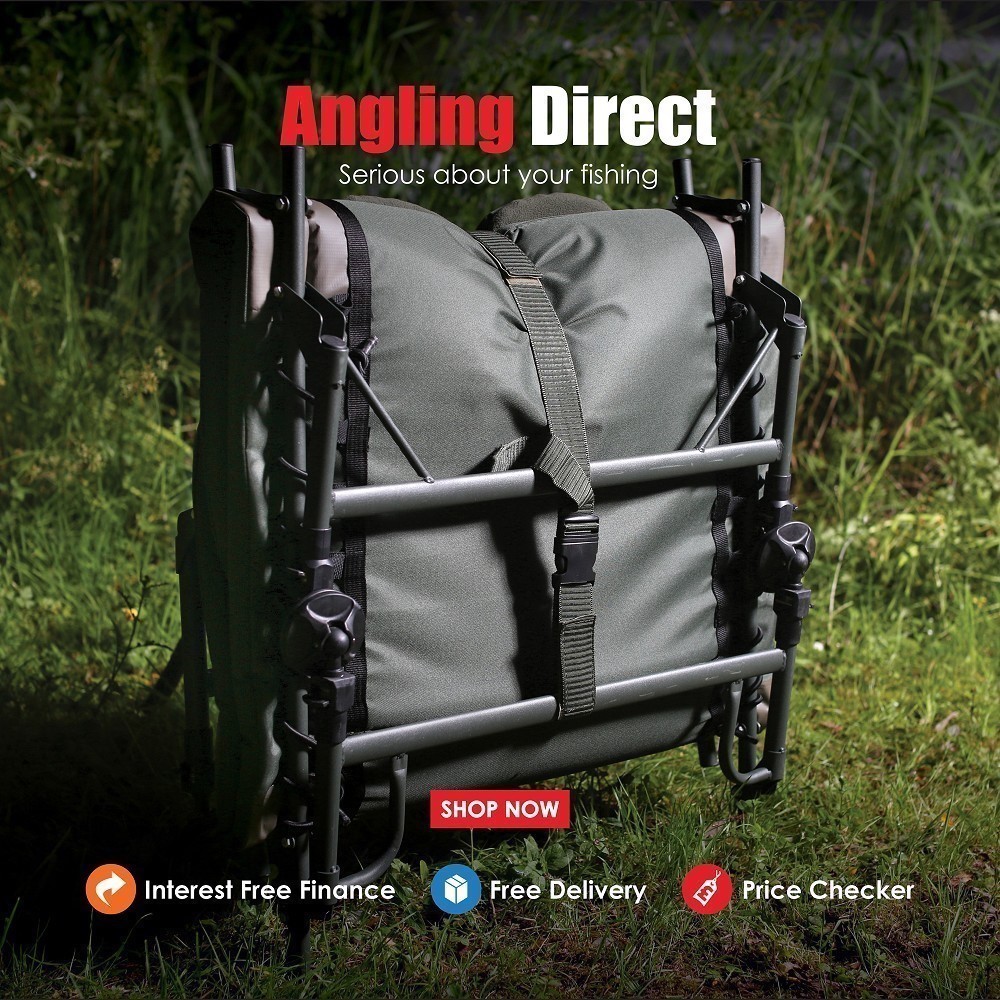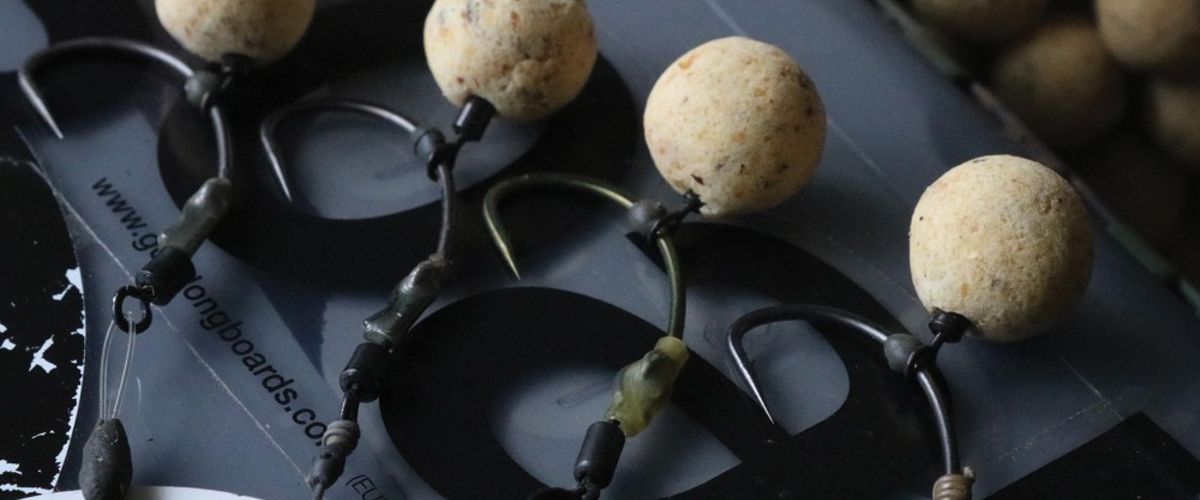
Everything you need to know about the German Rig
What’s it all about? And how has it evolved? Mat Woods has some valuable insight
Have you tried the ‘German Rig’ yet? Chances are you’ve heard of it and maybe you’ve caught a few on it too, but if you haven’t then this article will be well worth a read.
It’s worth pointing out that the rig is nothing new. The name has stuck following its publication in a few magazines, on YouTube and its subsequent popularity on the bank. I have certainly found at the last few shows that most anglers want to ask questions about it, or tell me what a great season they’ve had using ‘The German’. One guy even thought I was German! I am not even the creator of it, nor do I claim to be, so I thought it would be good to tell the full story here in CARPology.
For those who may have heard of the rig, but haven’t heard the background, I suppose I ought to give some details before diving too deeply into how the rig has since evolved for myself and friends.
I had always been more of a combi-rig user, preferring the simplicity of a rig that’s worked since before I was born. However, following a trip to Germany a few years ago, a good friend of mine and top angler Christian Kessler showed me his take on a coated braid rig. Rather than remove any of the coating, he kept it all intact behind the hook. This, he said, stopped the hook from ‘folding back on itself’ in a carp’s mouth, when you were using a bait tighter to the shank, like when using a rig swivel and bead, or D rig. If you pick a bait up by your fingers and see what happens to your hook, you’ll see what Christian was getting at. He was basically revisiting the Stiff Rig, only with modern materials and hooks.
By using coated braid, you could use an aggressively curved hook like an Avid CRV, Nailer or Mugga. The coated braid has enough stiffness to stabilise the hooklink where it exits the eye, and consequently, when you pick the bait up, the hook hangs underneath the bait almost instantly. It’s not a rig that was designed to pass the palm test with flying colours, though it does, it was more to make the most of that moment when the bait first enters a carp’s mouth.
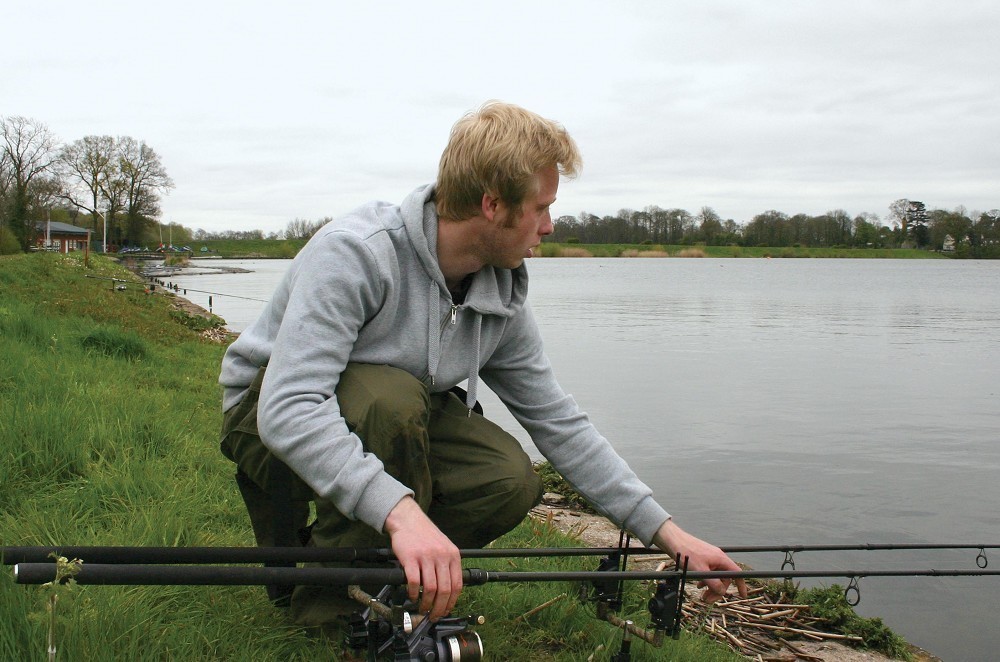 Christian the inventor: Christian Kessler first showed me the rig. When he visited England, he caught lots of fish on it from a variety of venues
Christian the inventor: Christian Kessler first showed me the rig. When he visited England, he caught lots of fish on it from a variety of venues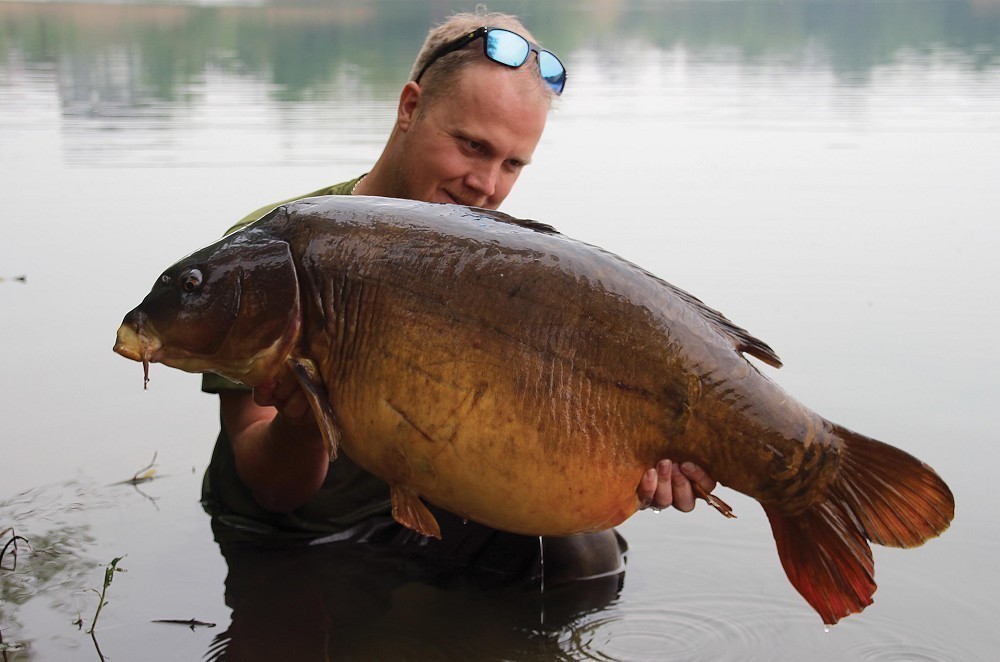 First German carp: My first bite on the rig was this 48lb+ warhammer, fishing with Christian on a historic German venue
First German carp: My first bite on the rig was this 48lb+ warhammer, fishing with Christian on a historic German venueThe other bonus, of course, is that the rig is seriously simple to tie. It’s a Knotless Knot, only instead of a Hair you have a rig swivel and a bead on the shank. That means the rig rarely, if ever, tangles. You can attach any hookbait, so long as it’s semi-buoyant or sinking, and you’ve got an efficient rig that lies on the bottom nicely virtually every time.
You can also use your favourite coated braid to achieve different things. If the lakebed is soft, or I’m unsure about it, I go for a 15lb coated braid, preferably a reasonably soft one, just in case the lead buries a little. If I’m confident the lakebed is firm and clean, I like a stiffer coated braid, or a heavier one that is inherently stiffer. There are loads of coated hooklinks and each of them changes how the ‘German Rig’ performs. The key is to choose the right one not only for the lakebed in front of you, but also how you’ve fed the swim. I go by the rule that the more bait there is and the tighter it’s applied, the shorter the rig should be. If you’re scattering baits, you can get away with a longer rig, but if you’re baiting tightly, I’ve found that longer rigs can lead to more fish falling off during the fight. Not always, but those are my experiences.
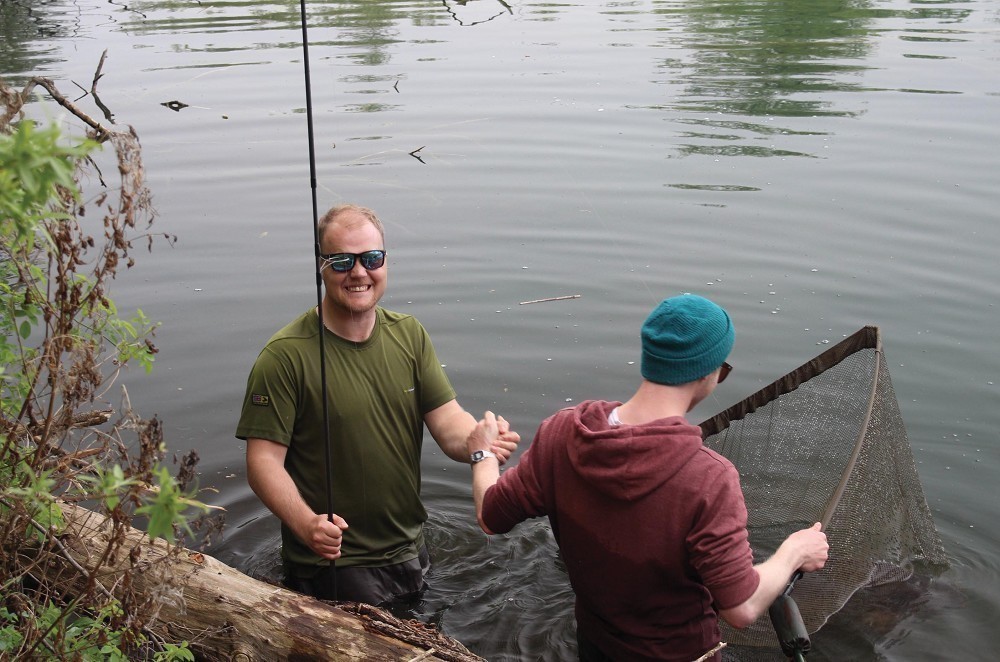 German moments: That German fish had to be extracted from savage snags. No problems with hook holds on the new rig, then?!
German moments: That German fish had to be extracted from savage snags. No problems with hook holds on the new rig, then?!One of the great things about the German Rig is that it gives awesome hook holds. I believe that’s partly because of the aggressively curved hook, but there’s more to it than that. The first time I tried the rig, I caught my personal best carp, a 22kg (48lb+) mirror from Christian’s German syndicate lake. I stalked the fish in gin clear water and watched as everything Christian said would unfold when a carp picked up the rig, happened right before my very eyes. That fish swam through snag after snag and I still landed him. The hooked-to-landed ratio on the German Rig is second-to-none.
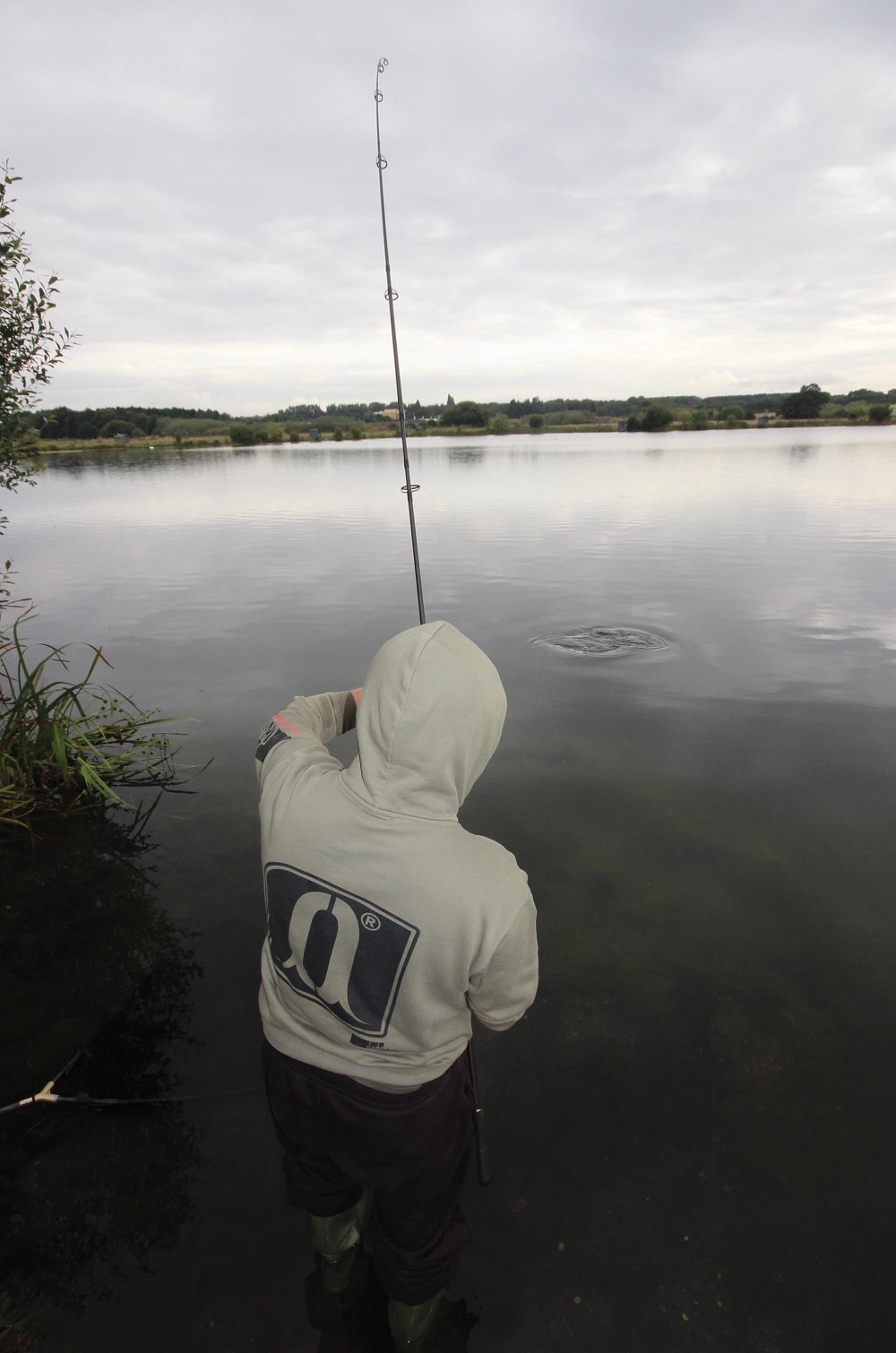 Fish haul: Back in the UK, I enjoyed my most prolific summer. Here’s a shot from my biggest ever hit at Baden Hall. 12 fish in as many hours
Fish haul: Back in the UK, I enjoyed my most prolific summer. Here’s a shot from my biggest ever hit at Baden Hall. 12 fish in as many hoursFollowing that initial German trip, I caught three UK 40s in one season, my best return to date, not to mention numerous other 30s and some of the biggest hits recorded on my local venues. The rig was nothing revolutionary, but it was making a difference in my own fishing, so I wrote about it and talked about it. If you want to call it the Fat Bald Noddy From Staffordshire Rig, please do so. Unlike some in this trade, I don’t claim naming rights for anything.
Typically, I’ve been looking at ways to improve the rig ever since that first fish. Quite why, I don’t know, but something that is always ticking around my head when I’m carp fishing is how conspicuous the end tackle is. I had done so well in my fishing after switching to fluorocarbon leaders instead of leadcore, and wanted to extend that into my rigs. Coated braid works, sure, but fluoro is fluoro, right? It’s about as invisible as we’re going to get.
You can tie German Rigs in fluorocarbon to a CRV or similar hook, but they don’t work the same as when they’re tied in coated braid. It’s like the fluoro doesn’t allow the hook to ‘spin’ into position properly, the memory in the material can leave the hook sitting sideways when it’s picked up, rather than prone underneath.
To counteract this, I started to use what the Avid guys call The Easy D Rig. It’s basically the Korda DF IQ D Rig, but it’s much easier to tie than the whipping knot-driven version Danny and his disciples promote. This worked quite well for me through a couple of winters, but I was still more confident in the German working more efficiently, as I found I needed to use fairly light breaking strain fluorocarbons to achieve the ‘prone’ hook that makes the German so effective.
A couple of years ago I was on the banks of Baden Hall when Iain ‘Ting Tong’ Macmillan mentioned the ‘Spinner Rig’ whilst stealing some particularly nice chocolate biscuits that he kept telling me he shouldn’t be eating. The ‘Spinner’ – something that has subsequently been promoted as the ‘Ronnie Rig’ – has been around a long time and my first peak at it was on the banks of St John’s around a decade ago. Isn’t it funny how those names stick? The names are usually what one small group of mates call something and then it just grows from there. (It always makes me chuckle when a Facebook saddo wants to point that out to you, naming no names.)
Following the conversation with Tongy, I started to muck about using it with wafters on fluorocarbon. The ‘Ronnie’ is a pop-up rig, a good one too, but with wafters or bottom baits on, I can tell you from my own underwater findings that it doesn’t seem to work properly. My first bite on the rig fell off and I didn’t know why. I cursed myself for changing a winning formula, but wanted to get to the bottom of why.
What seems to happen is the hookbait falls back towards the lead, leaving the hook lying on top of your hooklink. It’s weird because it doesn’t seem to matter how you hit the clip, it lands in this clumsy way. See the pictures where I demonstrate this. One way around it was to use a standard QC swivel, not a Ring Swivel version. Removing the large ring meant the hookbait always kicked away – job’s a good ‘un. Next two mid-30s were nailed, happy days!
Another way was to tie a loop to the standard swivel. Because this is narrower than a ring, or balloon-shaped loop, it acts like another boom, throwing the hook away from the lead and the rig when it lands. Friends and I started calling this the Mickey Schumacher Rig, as it was like a German, only faster. It’s since been promoted as a Turbo German by Gardner Tackle and others – you can call it whatever you want, but it gives a beautiful presentation and for bottom baits and wafters, has been a great way of getting the best from the German Rig and fluorocarbon.
Another tweak if you decide to go this route, is at the lead end. On coated braids and most of my rigs, to be honest, I use an anti-tangle sleeve. For fluorocarbon, however, I’ve started to tie a large loop, and rather than using a long sleeve, I just use a small piece of stiff tubing to secure the rig to the QC swivel, leaving more of a ‘hinge’ at the lead end. I’ve found this really effective on the softer areas of silt and sand I’ve been fishing this year, though it’s not quite as tangle-proof.
Something I haven’t tried yet, though I have tied a few, is whipping a D rig to the back of the shank and securing it under the shrink tubing on the ‘Ronnie’ section, or using a Slip D style braid attachment. Someone wrote about this in a magazine once as being a 720 Rig. Why 720 I’m not sure, but there you go. I call it the Roddy Rig, as Tom Forrester showed it to me and he looks like Rod Stewart. Again, call it what you like. The joy of the larger D section is it provides more separation between hook and bait, which I think is quite important when using bigger baits. I think if I ever want to do any fishing with 18s or 20mm+ sized boilies, that will definitely be my preferred set-up, it makes more sense than having the bait tight to the shank.
For me, the German Rig is at its best with a wafter or bottom bait that looks too small for the size of the hook it’s being used with. I use 10mms on a size 6 and nothing larger than a 12mm on size 4s. Would I go to size 2s for anything larger? Why not? With a Pinpoint hook sharpening kit at my disposal, I can get the point similar to a smaller hook anyway.
Something I’d probably look at is using a different pattern of hook, though I must admit I haven’t had especially good results changing from the CRV/Mugga style pattern. I thought that Chod style hooks with fluorocarbon would be good, or that a curved pattern with a straighter eye would be effective, but it seems best to either tie direct to the CRV or use the ‘Ronnie’ style swivel attachment.
German evolution
In Germany last year I had to change to the strongest hooks I could get my hands on, due to the nature of the fishing. That worked quite well, actually, so if curved hooks are banned on your venue, something with a straight point and straight eye seems to work okay.
I know other anglers have found success trying different hooks, because lots of guys came up to me at Zwolle, NAS and The Big One shows to tell me about the big fish they’d caught on their own variations of the rig. Something of note is that most of my experience with the German Rig has been using it over spodded areas, with lots of small baits. I’ve had a few chunks just lobbing bags at fish with the German, but I haven’t done any ‘boilie only’ fishing with it, really. Lots of the guys who spoke to me at the shows were ‘boilie only’ anglers, and found their own way of making the rigs work for them in the baiting situation they were creating. Lots were shocked to see that there was nothing longer than 6” on my rig board. They’d been using them over 12” in certain cases, and why not? If I was scattering boilies around with the stick, I’d probably do the same.
The great thing about rigs, whether German or not, is that you can tweak them to suit what you’re facing in your own angling. When you consider all the things you can change, from the hook, to the hooklink material; the length of the rig, the type of swivel attachment, the way you attach the bait, where you place the bead, the buoyancy of your bait, the placement of your rig putty or sinkers, shrink tubing, this, that, the other and the kitchen sink can totally transform a rig. What I use may be costing me fish, for all I know, and it’s just a bit of good, solid angling that’s putting fish on the bank. I prefer to think that those small tweaks, those informed adjustments, can genuinely improve how your rig performs. So that when the fish are there, and when the fish do start eating your bait, that you can put more of them on the bank and in your photo album.
Just remember that if you do stumble across something special, give it a memorable name so the rest of us get to hear about it!



